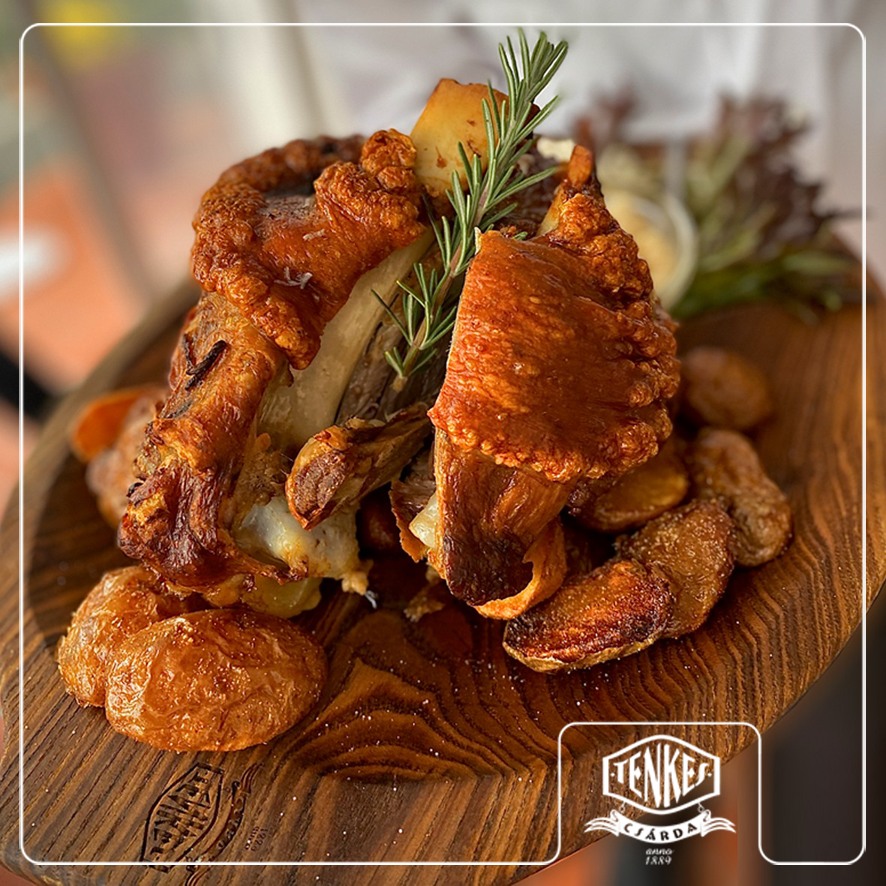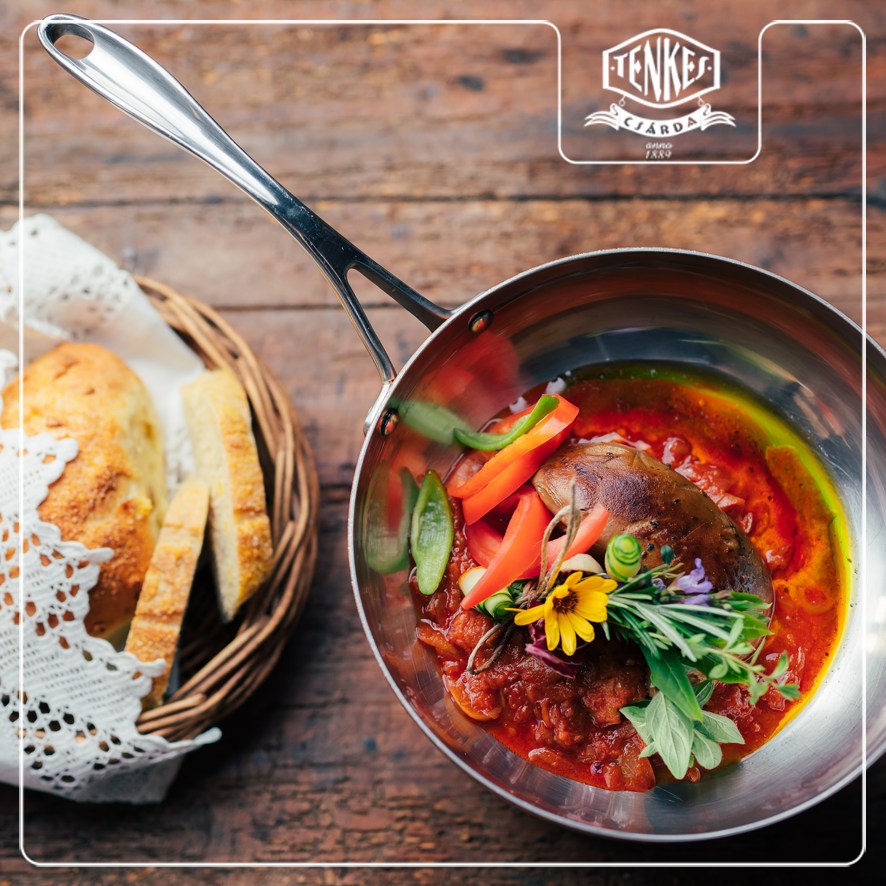A Hungarian tavern is not just a restaurant. It is a pedestal on which to build, through which we can learn about the past and go back to the old days. Important things were once decided here. It is one of the oldest institutions of Hungarian hospitality, which has become a concept and has many legends attached to it. The tavern is a sanctuary, a temple of the Hungarian spirit, and a category of its own among restaurants.



On the main road 58 towards Siklós and Harkány, the Tavern building on Tenkes Hill has been waiting for the starving traveller for almost two hundred years, with some interruptions. The building has existed since the 19th century, and according to archival articles and land registry records it was called the Kövesi Tavern because of the quarry on top of the hill, and later the name Tenkes was given to it because it stands on the top of the Tenkes Hill. It went bankrupt in the 1990s and was closed for years. 24 years ago, the beautiful façade of what was then the Tenkes Tavern was just a crumbling “code stand”. Today, its appearance conveys respect for the traditions inherited from our ancestors, but the dilapidated building was designed in 1998 by Gábor Kovács, who, with no financial outlay and selling everything he had, dreamed up what is now visible on the site of the former ruin.
The primary goal of the restoration was to create something lasting from what was left, not to give up the cultural heritage of Baranya, and to stay true to the roots. He searched for hundred-year-old beams, building materials, hand-made weavings, fabrics, collected and still collects everyday tools and utensils of our grandfathers in the Ormánság, raises animals native to our country, in order to create a real model port for the glory of Baranya and especially the region.
The taverns have always been more for poor people, for travellers, for roadside rest stops where the emphasis was not on quality and standards. Gábor Kovács’s idea from the beginning was to offer his guests a sophisticated hospitality while respecting and keeping alive the Hungarian traditions. He showed what real Hungarian cuisine is like, not in an ordinary way, so that the gastronomy of the Hungarian nation could be judged by a real Hungarian Csárda.
At the entrance to the Tenkes Tavern, you will be greeted by a code booth. Whitewashed walls, inside and out. Exposed, sturdy wooden beams and slab. Uneven wall surfaces, spoon-shaped, organic shapes, richly decorated details. In terms of architectural materials, Gábor Kovács was careful to use natural materials made in Hungary wherever possible. In the special room, beams from the old church in Kisharsány, which had been removed during the renovation, were used. The wood-burning oven, in which the really delicious, juicy oven dishes are prepared, and a wheat oven, on whose bench you can rest and warm yourself in winter, are an indispensable accessory of the Csárda. Everything is a celebration of the beauty of Hungarian folk culture.
Csárda is considered by many to be synonymous with Hungarian (or perceived to be) cuisine, which is viscerally associated with fatty, cholesterol- and pepper-rich food. But the equivalence sign should be treated with care. It is the perfect platform for promoting and disseminating local specialities, home-made dishes and ingredients, and a driving force for the recovery of small local producers in the area who produce local produce.

